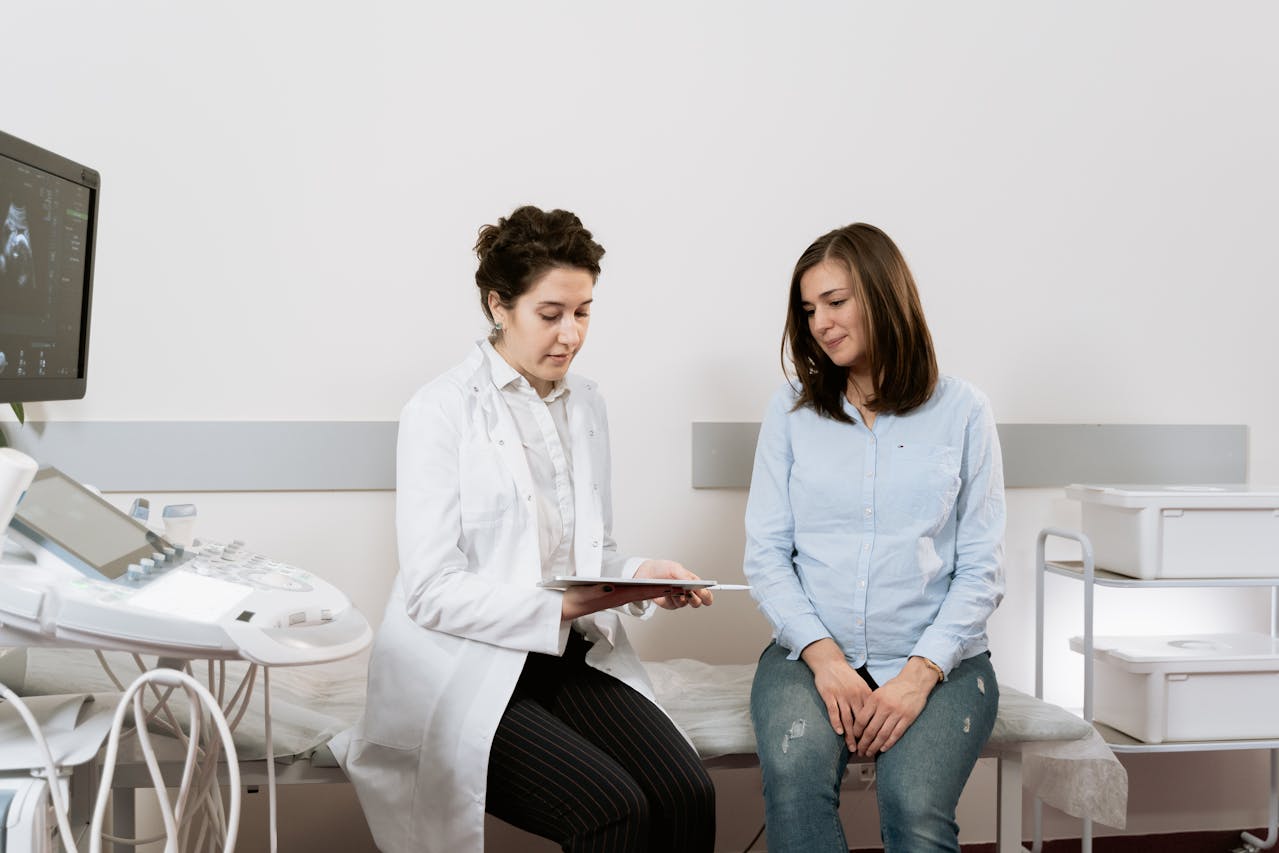Perineal massage is a technique that involves gently stretching and massaging the perineum—the area between the vaginal opening and the anus—to prepare for childbirth. This practice has been shown to reduce the likelihood of perineal tears and the need for an episiotomy during labor. Incorporating perineal massage into a prenatal routine can help increase the perineum’s flexibility, making the birthing process smoother and more comfortable. What Is Perineal Massage? Perineal massage is a hands-on technique used in the weeks leading up to childbirth. It involves applying gentle pressure and stretching motions to the perineal tissue to improve elasticity. Expectant mothers or their partners can perform the massage to help prepare the body for the physical demands of delivery. Why Is Perineal Massage Important? The perineum undergoes significant stretching during vaginal birth. Without preparation, this area may tear naturally or require an episiotomy. Perineal massage helps condition the perineal tissues, promoting greater flexibility and reducing trauma during delivery. Studies have shown that women who practice perineal massage in the last weeks of pregnancy have a lower risk of perineal trauma and experience a faster postpartum recovery. Benefits of Perineal Massage Numerous studies and anecdotal evidence suggest that perineal massage provides several benefits, including: 1. Reduces the Risk of Perineal Tears During vaginal delivery, the perineum stretches to accommodate the baby’s head. Perineal massage helps improve tissue elasticity, reducing the risk of tearing. 2. Lowers the Need for an Episiotomy An episiotomy is a surgical incision made in the perineum to widen the vaginal opening. Perineal massage has been found to decrease the need for this procedure, leading to a more natural birthing experience. 3. Enhances Postpartum Recovery By reducing the likelihood of tearing or the need for an episiotomy, perineal massage can lead to a faster and less painful postpartum recovery. Less damage to the perineal area means fewer stitches, less discomfort, and a reduced risk of infection. 4. Increases Perineal Flexibility Regular massage can help the perineal muscles stretch more easily, making childbirth less traumatic for the tissues. It also allows mothers to familiarize themselves with the stretching sensations they will experience during labor. 5. Reduces Discomfort During Delivery The technique helps prepare the perineal area for the sensations experienced during birth, potentially reducing pain and discomfort. Women who practice perineal massage may also feel more in control during delivery. When to Start Perineal Massage Healthcare professionals typically recommend starting perineal massage around 34 to 36 weeks of pregnancy. Performing the massage 2 to 3 times per week for about 5 to 10 minutes can be effective in preparing the perineum for delivery. How to Perform Perineal Massage Step 1: Prepare the Area Step 2: Position Yourself Step 3: Begin the Massage Step 4: Breathe and Relax Tips for Effective Perineal Massage Who Should Avoid Perineal Massage? Perineal massage is generally safe, but certain conditions may require medical guidance: Alternative Methods to Prepare the Perineum If perineal massage is uncomfortable or not suitable for you, consider alternative techniques to improve perineal elasticity: Does Perineal Massage Work for Everyone? While many women report positive outcomes, perineal massage is not a guaranteed method for preventing perineal tears. Other factors, such as baby size, birth position, and the speed of labor, also influence perineal outcomes. However, it remains a useful technique that can increase a mother’s confidence and readiness for delivery. Final Thoughts Perineal massage is a simple yet effective technique to prepare the body for childbirth. By incorporating this practice into a prenatal routine, expecting mothers can reduce the risk of perineal trauma and enhance their postpartum recovery. As with any prenatal practice, consulting with a healthcare provider before starting perineal massage is always recommended to ensure safety and effectiveness.
Prenatal Yoga: Benefits, Poses, and Safety Tips for Expecting Moms
Pregnancy is a transformative journey filled with excitement and changes in the body. One of the best ways to stay healthy, reduce stress, and prepare for childbirth is through prenatal yoga. This ancient practice offers a safe and effective way for expecting mothers to maintain flexibility, build strength, and foster a deep connection with their growing baby. In this guide, we’ll explore the benefits of prenatal yoga, safe poses for each trimester, and essential tips to ensure a healthy and enjoyable practice. What Is Prenatal Yoga? Prenatal yoga is a specialized form of yoga designed for pregnant women. It focuses on gentle movements, controlled breathing, and relaxation techniques to support both the mother and baby. Unlike traditional yoga, prenatal yoga avoids poses that could put strain on the belly or cause discomfort, ensuring a safe and effective workout. Benefits of Prenatal Yoga Practicing prenatal yoga provides numerous physical, emotional, and mental benefits, making it an excellent choice for expecting mothers. Some of the key benefits include: 1. Improves Flexibility and Strength Prenatal yoga strengthens the muscles needed for labor and delivery, particularly in the core, back, and pelvic floor. It also enhances flexibility, making movement easier as the belly grows. 2. Reduces Pregnancy Discomfort Common pregnancy discomforts like back pain, swollen ankles, and nausea can be alleviated through yoga poses that improve circulation, posture, and relaxation. 3. Enhances Relaxation and Stress Relief Breathing exercises and meditation techniques in prenatal yoga help lower stress hormones and promote a sense of calm. This can be beneficial in managing pregnancy-related anxiety and improving sleep quality. 4. Prepares the Body for Labor and Delivery Certain yoga poses and breathing techniques mimic the natural rhythms of labor, helping the body become more accustomed to contractions and relaxation during childbirth. 5. Promotes Bonding with Baby Prenatal yoga encourages mindfulness, allowing mothers to focus on their growing baby. This practice strengthens the emotional bond between mother and child. 6. Encourages a Supportive Community Attending prenatal yoga classes provides a supportive environment where expecting mothers can share their experiences and form connections with others going through the same journey. Best Prenatal Yoga Poses for Each Trimester First Trimester (Weeks 1-12) During the first trimester, energy levels may fluctuate, and morning sickness can be challenging. Gentle stretching and breathing exercises can help ease discomfort. Second Trimester (Weeks 13-27) This is often the most comfortable stage of pregnancy, making it an ideal time to focus on strength and stability. Third Trimester (Weeks 28-40) As the belly grows, balance and comfort become top priorities. Gentle movements and breathing exercises can help with relaxation and labor preparation. Safety Tips While prenatal yoga is generally safe, there are important precautions to keep in mind: Prenatal Yoga vs. Regular Yoga: What’s the Difference? Prenatal yoga differs from regular yoga in several ways to ensure the safety of both the mother and baby: When to Avoid Prenatal Yoga Though prenatal yoga is generally beneficial, certain conditions may require extra caution. Avoid yoga if you experience: If you are unsure, always consult your healthcare provider before continuing your practice. Final Thoughts Prenatal yoga is an excellent way for expecting mothers to stay active, reduce stress, and prepare for childbirth. By following safe and gentle practices, you can experience a healthier and more enjoyable pregnancy. Whether you’re a beginner or an experienced yogi, prenatal yoga provides physical and emotional benefits that support both you and your baby throughout this incredible journey. If you’re new to yoga, consider joining a prenatal yoga class or following online sessions guided by certified instructors to ensure a safe and supportive experience. Embrace the power of prenatal yoga and enjoy a healthier, happier pregnancy!


